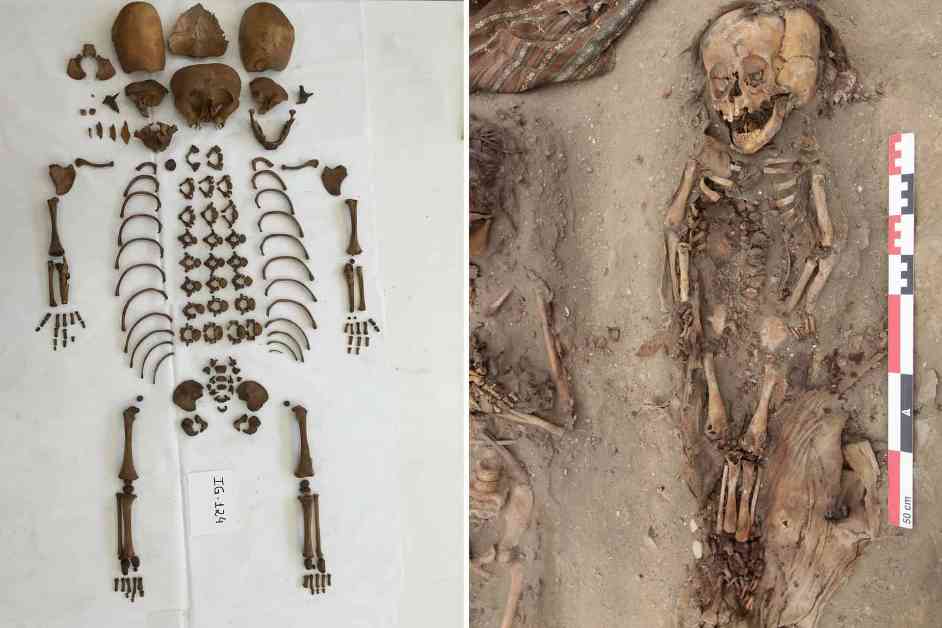In 2019, a grave with 269 children’s skeletons was discovered in Huanchaco, Peru, who were victims of human sacrifice. Recently, another cemetery was found with 120 skeletons, including two 1.5-year-old toddlers who died of smallpox. Smallpox was introduced to Peru by European colonizers in the 1530s and devastated the indigenous population. The toddler skeletons provide a rare opportunity to study the disease’s impact on the Chimú-Inka people.
The researchers found that about 90 of the 120 skeletons were of children and infants, who were more vulnerable to smallpox due to their developing immune systems. The toddler skeletons, IG-124 and IG-493, showed signs of osteomyelitis variolosa, a bone infection caused by the smallpox virus, making them the earliest known cases in South America.
The graves were located near a 500-year-old church built by Spanish colonists, and many native Inca individuals were buried with Christian symbols, indicating a mix of traditional and colonial burial practices. Further excavation of the cemetery may provide more information about the spread of diseases and cultural transitions in the region.
Lead researcher Khrystyne Tschinkel mentioned that there is still more to uncover as they continue to excavate the site. The combination of Chimú-Inka and colonial burial practices suggests a transitional period in identity for the native people. More research is needed to gain a deeper understanding of how foreign diseases affected South American populations during the early colonial period.
The study detailing these findings has been published in the International Journal of Paleopathology, offering valuable insights into the historical impact of smallpox in Peru. Further research and excavation may shed more light on this fascinating discovery and help us learn more about the past.






